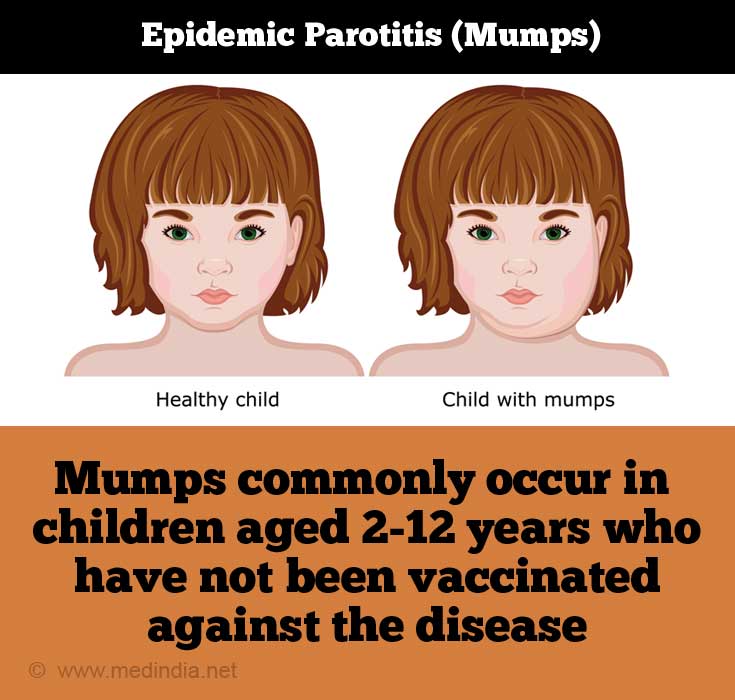General Info About Mumps
Mumps is a contagious viral infection that typically causes a painful swelling of one or more of the salivary glands. It is also known as epidemic parotitis.

The salivary glands are located on either side of the face, below the ears. This infection gives an appearance rather like a ‘hamster with food in its cheeks’.
Mumps most commonly occurs in children aged 2-12 years who have not been vaccinated against the disease. However, it can occur at any age. It was a common childhood disease before the development of the mumps vaccine (MMR vaccine).
Mumps is spread by droplet infection. This is less communicable than measles or chickenpox. One attack usually confers permanent immunity, even though only one salivary gland has been enlarged. About 25 to 30% of cases are clinically inapparent.
Swelling and tenderness of the parotid gland are the classical signs of mumps, and diagnosis is made on this basis. Laboratory tests are rarely required.
Serious complications of mumps are rare and include meningitis, encephalitis, deafness and orchitis.
There is no specific treatment for mumps. Treatment aims at relieving the pain and discomfort caused by the swelling.
 MEDINDIA
MEDINDIA

 Email
Email
can someone have mumps twice
no you can only get it once
If a person is not vaccinated in early childhood and gets mumps in teen age what should be done after he recovered. i mean if vaccinate at this age for the first time will it help in prevent the disease in future.
Once you have had the disease mumps, you become therefore immune to it afterwards.
What's New on Medindia
Articles
Follow @MedIndia
Mumps - Related News
Drugs for Mumps